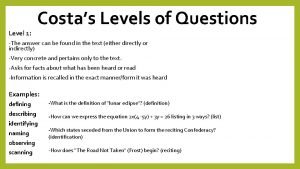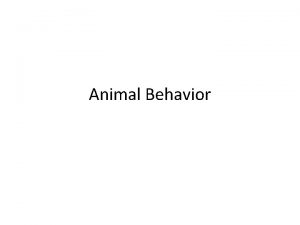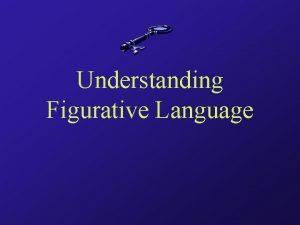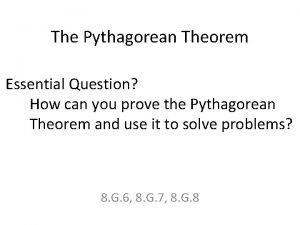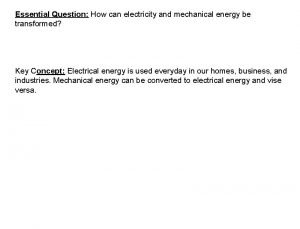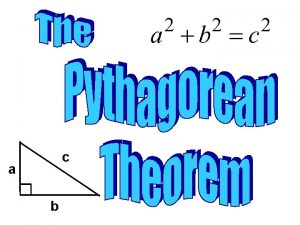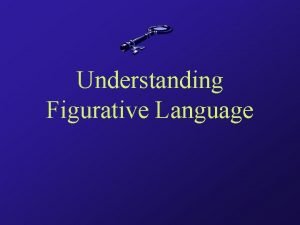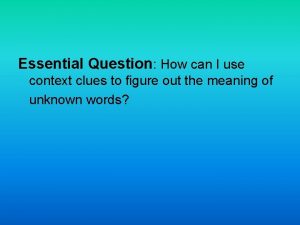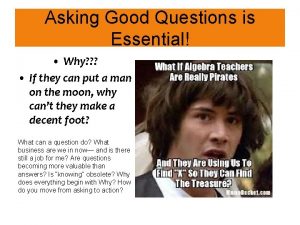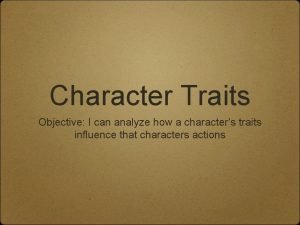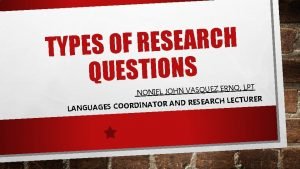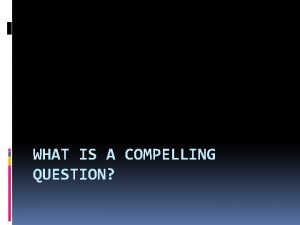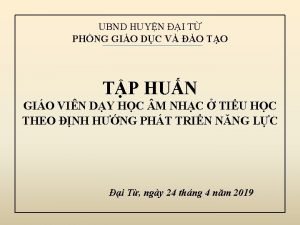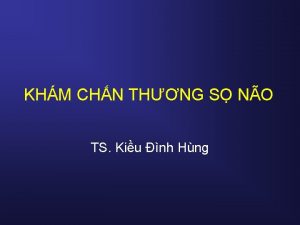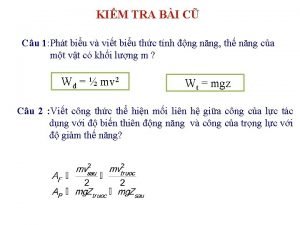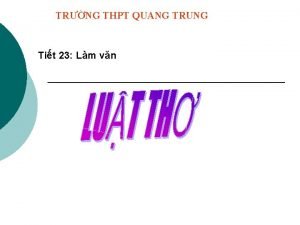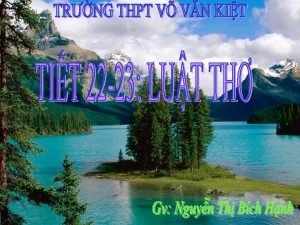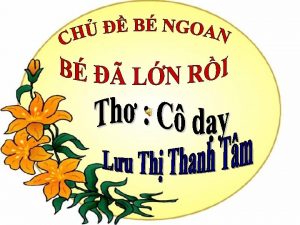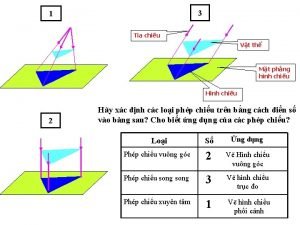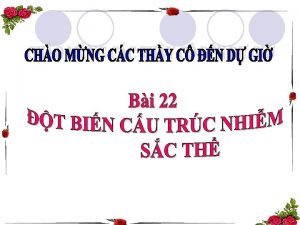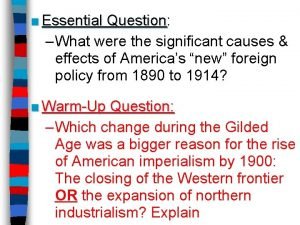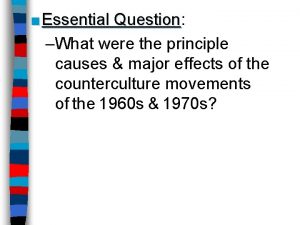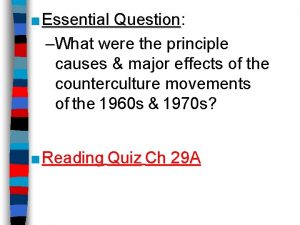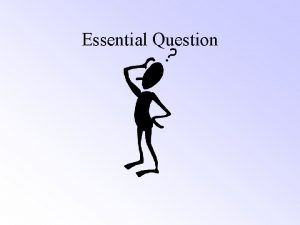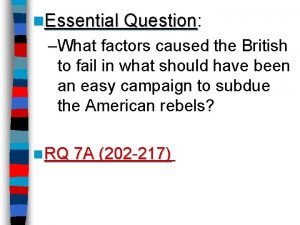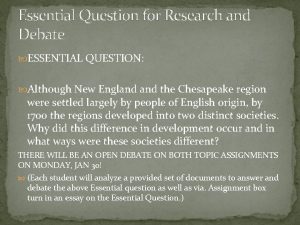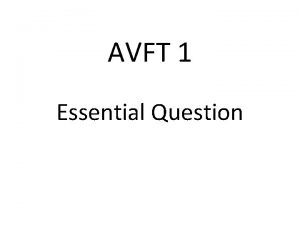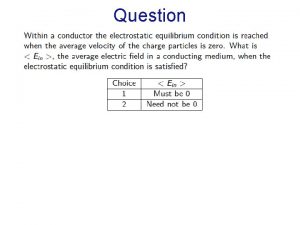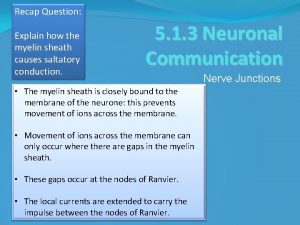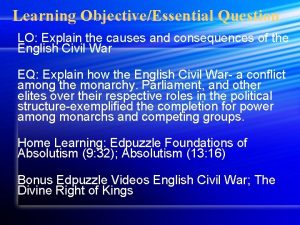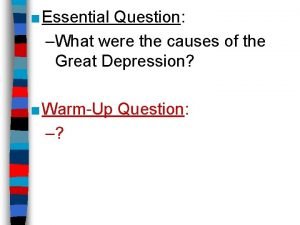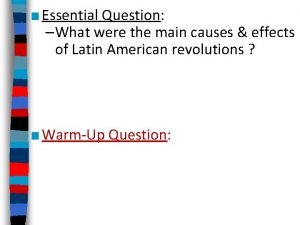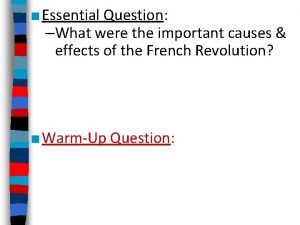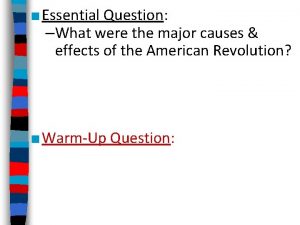Essential Question How can I explain the causes


















































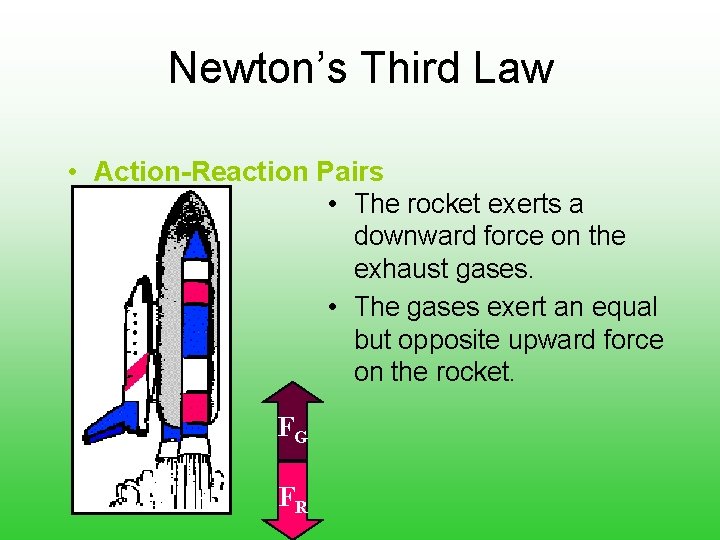
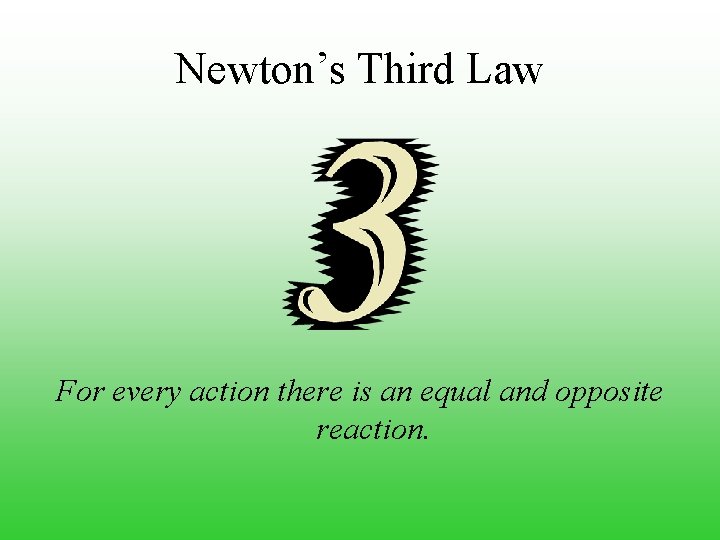
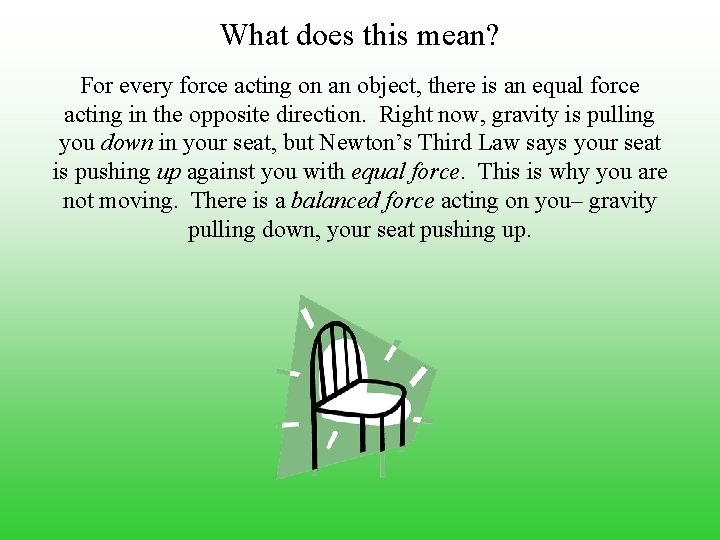
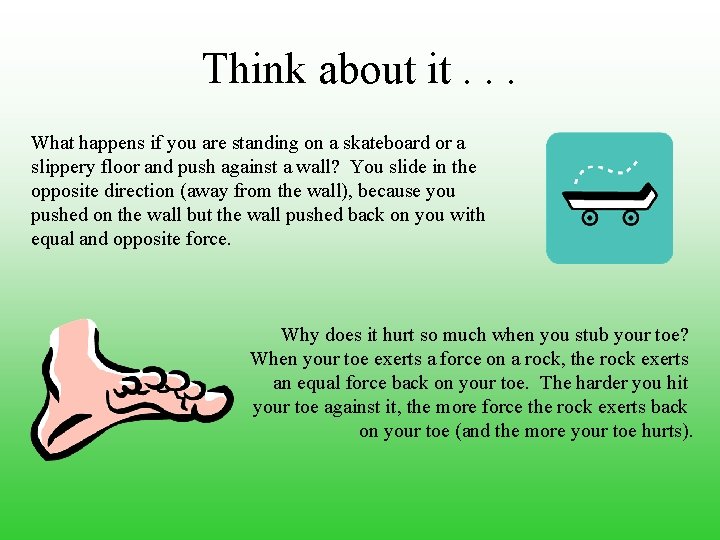
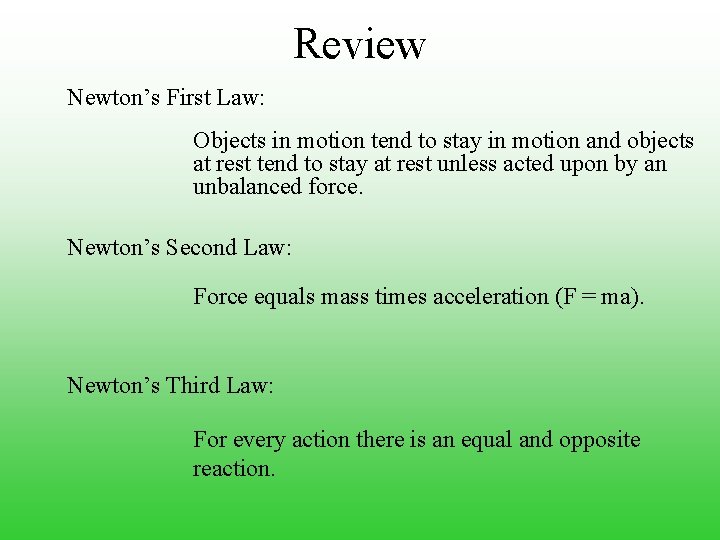
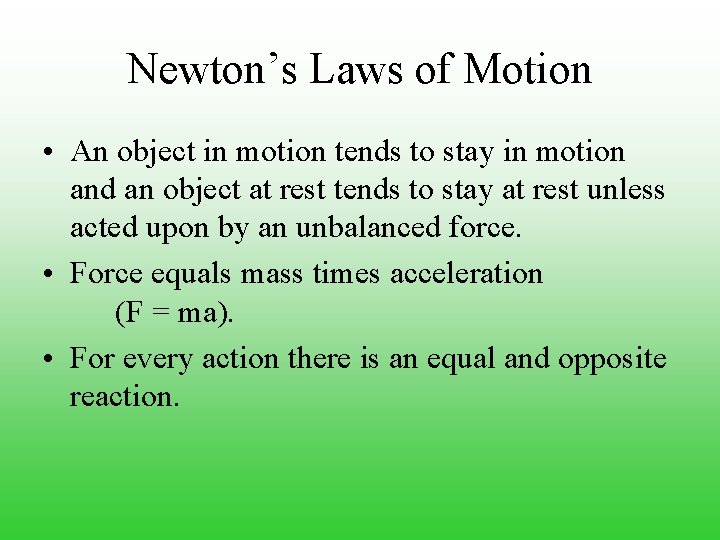
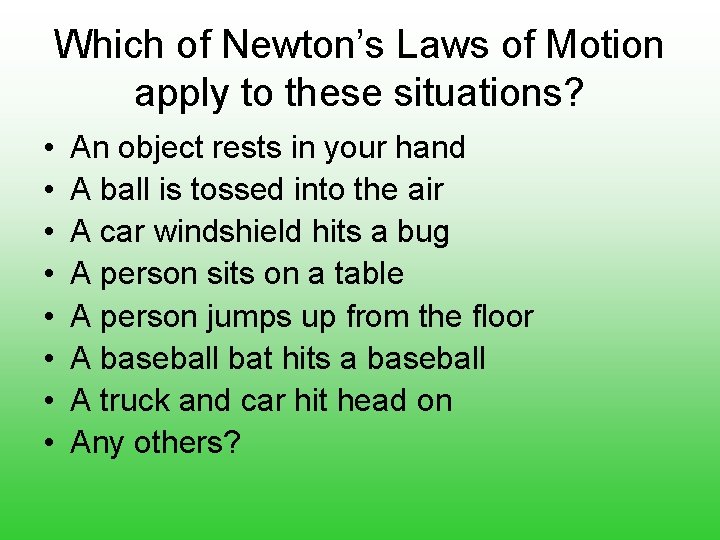
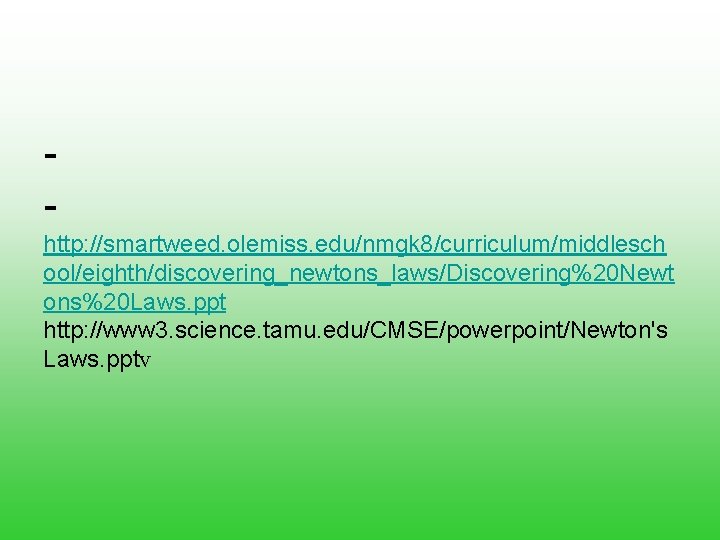
- Slides: 58


Essential Question • How can I explain the causes of motion on an object? • Learning Objectives: Laws of Motion, Friction, Force

Background Sir Isaac Newton (1643 -1727) an English scientist and mathematician famous for his discovery of the law of gravity also discovered the three laws of motion. He published them in his book Philosophiae Naturalis Principia Mathematica (mathematic principles of natural philosophy) in 1687. Today these laws are known as Newton’s Laws of Motion and describe the motion of all objects on the scale we experience in our everyday lives.


Newton’s Laws of Motion • 1 st Law – An object at rest will stay at rest, and an object in motion will stay in motion at constant velocity, unless acted upon by an unbalanced force. • 2 nd Law – Force equals mass times acceleration. • 3 rd Law – For every action there is an equal and opposite reaction.

First Law: An object at rest stays at rest or an object in motion, stays in motion (in the same direction/at the same speed) unless acted upon by an unbalanced force l Also called the law of inertia

Inertia üA property of matter üThe tendency of an object to resist any change in its motion üThe greater the mass the greater the inertia üThe greater the speed the greater the inertia

Examples of Newton’s 1 st Law a) car suddenly stops and you strain against the seat belt b) when riding a horse, the horse suddenly stops and you fly over its head c) the magician pulls the tablecloth out from under a table full of dishes d) the difficulty of pushing a dead car e) lawn bowling on a cut and rolled lawn verses an uncut lawn appear f) car turns left and you to slide to the right

Examples of Newton’s 1 st Law

1 st Law • Once airborne, unless acted on by an unbalanced force (gravity and air – fluid friction), it would never stop!

1 st Law • Unless acted upon by an unbalanced force, this golf ball would sit on the tee forever.


Newton’s First Law • Newton’s First Law of Motion – An object at rest will remain at rest and an object in motion will continue moving at a constant velocity unless acted upon by a net force.

Newton’s First Law • Newton’s First Law of Motion – “Law of Inertia” • Inertia – tendency of an object to resist any change in its motion – increases as mass increases

Some Examples from Real Life A soccer ball is sitting at rest. It takes an unbalanced force of a kick to change its motion. Two teams are playing tug of war. They are both exerting equal force on the rope in opposite directions. This balanced force results in no change of motion.

More Examples from Real Life A powerful locomotive begins to pull a long line of boxcars that were sitting at rest. Since the boxcars are so massive, they have a great deal of inertia and it takes a large force to change their motion. Once they are moving, it takes a large force to stop them. On your way to school, a bug flies into your windshield. Since the bug is so small, it has very little inertia and exerts a very small force on your car (so small that you don’t even feel it).

If objects in motion tend to stay in motion, why don’t moving objects keep moving forever? Things don’t keep moving forever because there’s almost always an unbalanced force acting upon it. A book sliding across a table slows down and stops because of the force of friction. If you throw a ball upwards it will eventually slow down and fall because of the force of gravity.

Why then, do we observe every day objects in motion slowing down and becoming motionless seemingly without an outside force? It’s a force we sometimes cannot see – friction.

What is this unbalanced force that acts on an object in motion? • There are four main types of friction: – Sliding friction: ice skating – Rolling friction: bowling – Fluid friction (air or liquid): air or water resistance – Static friction: initial friction when moving an object

Newton’s First Law An object at rest tends to stay at rest and an object in motion tends to stay in motion unless acted upon by an unbalanced force.

What does this mean? Review… Basically, an object will “keep doing what it was doing” unless acted on by an unbalanced force. If the object was sitting still, it will remain stationary. If it was moving at a constant velocity, it will keep moving. It takes force to change the motion of an object.

Newtons’s 1 st Law and You Don’t let this be you. Wear seat belts. Because of inertia, objects (including you) resist changes in their motion. When the car going 80 km/hour is stopped by the brick wall, your body keeps moving at 80 m/hour.

2 nd Law The net force of an object is equal to the product of its mass and acceleration, or F=ma.

Second law: The greater the force applied to an object, the more the object will accelerate. It takes more force to accelerate an object with a lot of mass than to accelerate something with very little mass. The player in black had more acceleration thus he hit with a greater amount of force

2 nd Law What is Force? on an object!! It is any push or pull


Second law: ¡The greater the force, the greater the acceleration ¡The greater the mass, the greater the force needed for the same acceleration ¡Calculated by: F = ma ¡ (F = force, m = mass, a = acceleration)

Examples of Newton’s 2 nd Law a) hitting a baseball, the harder the hit, the faster the ball goes b) accelerating or decelerating a car c) The positioning of football players - massive players on the line with lighter (faster to accelerate) players in the backfield d) a loaded versus an unloaded truck

Examples of Newton’s 2 nd Law

Newton’s Second Law • Newton’s Second Law of Motion – The acceleration of an object is directly proportional to the net force acting on it and inversely proportional to its mass. F = ma

Newton’s Second Law Force equals mass times acceleration. F = ma Acceleration: a measurement of how quickly an object is changing speed.

2 nd Law • When mass is in kilograms and acceleration is in m/s/s, the unit of force is in newtons (N). • One newton is equal to the force required to accelerate one kilogram of mass at one meter/second.

2 nd Law (F = m x a) • How much force is needed to accelerate a 1400 kilogram car 2 meters per second/per second? • Write the formula • F=mxa • Fill in given numbers and units • F = 1400 kg x 2 meters per second/second • Solve for the unknown • 2800 kg-meters/second or 2800

Newton’s 2 nd Law proves that different masses accelerate to the earth at the same rate, but with different forces. • We know that objects with different masses accelerate to the ground at the same rate. • However, because of the 2 nd Law we know that they don’t hit the ground with the same force. F = ma 98 N = 10 kg x 9. 8 m/s/s 9. 8 N = 1 kg x 9. 8 m/s/s

Concept. Test • Is the following statement true or false? – An astronaut has less mass on the moon since the moon exerts a weaker gravitational force. – False! Mass does not depend on gravity, weight does. The astronaut has less weight on the moon.

Check Your Understanding • 1. What acceleration will result when a 12 N net force applied to a 3 kg object? A 6 kg object? • 2. A net force of 16 N causes a mass to accelerate at a rate of 5 m/s 2. Determine the mass. • 3. How much force is needed to accelerate a 66 kg skier 1 m/sec? • 4. What is the force on a 1000 kg elevator that is falling freely at 9. 8 m/sec?

third law: For every action force, there is an equal and opposite reaction force. (Forces are always paired)

3 rd Law According to Newton, whenever objects A and B interact with each other, they exert forces upon each other. When you sit in your chair, your body exerts a downward force on the chair and the chair exerts an upward force on your body.


Newton’s 3 rd Law in Nature • Consider the propulsion of a fish through the water. A fish uses its fins to push water backwards. In turn, the water reacts by pushing the fish forwards, propelling the fish through the water. • The size of the force on the water equals the size of the force on the fish; the direction of the force on the water (backwards) is opposite the direction of the force on the fish (forwards).

3 rd Law Flying gracefully through the air, birds depend on Newton’s third law of motion. As the birds push down on the air with their wings, the air pushes their wings up and gives them lift.

Examples of Newton’s a) rockets leaving earth b) guns being fired c) two cars hit head on d) astronauts in space e) pool or billiards f) jumping out of a boat onto the dock g) sprinklers rotating rd 3 Law

Examples of Newton’s rd 3 Law Newton’s third law: "For every action, there is an equal and opposite reaction. " When you fire a gun you feel the recoil. Some of the funniest things in cartoons follow physics that have been exaggerated or just plain ignored. Wyle Coyote hangs suspended in space over that canyon for a lot longer than an object would in reality, but it is the anticipation of the drop and Wyle's facial recognition of the upcoming pain that is so classically cartooney. So some laws are stretched for comical effect.

Other examples of Newton’s Third Law • The baseball forces the bat to the left (an action); the bat forces the ball to the right (the reaction).

3 rd Law • Consider the motion of a car on the way to school. A car is equipped with wheels which spin backwards. As the wheels spin backwards, they grip the road and push the road backwards.

Examples of Newton’s 3 rd Law

Newton’s Third Law • Newton’s Third Law of Motion – When one object exerts a force on a second object, the second object exerts an equal but opposite force on the first.

Newton’s Third Law • Problem: – How can a horse pull a cart if the cart is pulling back on the horse with an equal but opposite force? – Aren’t these “balanced forces” resulting in no acceleration? NO!!!

Newton’s Third Law • Explanation: – forces are equal and opposite but act on different objects – they are not “balanced forces” – the movement of the horse depends on the forces acting on the horse

Newton’s Third Law • Action-Reaction Pairs • The hammer exerts a force on the nail to the right. • The nail exerts an equal but opposite force on the hammer to the left.

Newton’s Third Law • Action-Reaction Pairs • The rocket exerts a downward force on the exhaust gases. • The gases exert an equal but opposite upward force on the rocket. FG FR

Newton’s Third Law For every action there is an equal and opposite reaction.

What does this mean? For every force acting on an object, there is an equal force acting in the opposite direction. Right now, gravity is pulling you down in your seat, but Newton’s Third Law says your seat is pushing up against you with equal force. This is why you are not moving. There is a balanced force acting on you– gravity pulling down, your seat pushing up.

Think about it. . . What happens if you are standing on a skateboard or a slippery floor and push against a wall? You slide in the opposite direction (away from the wall), because you pushed on the wall but the wall pushed back on you with equal and opposite force. Why does it hurt so much when you stub your toe? When your toe exerts a force on a rock, the rock exerts an equal force back on your toe. The harder you hit your toe against it, the more force the rock exerts back on your toe (and the more your toe hurts).

Review Newton’s First Law: Objects in motion tend to stay in motion and objects at rest tend to stay at rest unless acted upon by an unbalanced force. Newton’s Second Law: Force equals mass times acceleration (F = ma). Newton’s Third Law: For every action there is an equal and opposite reaction.

Newton’s Laws of Motion • An object in motion tends to stay in motion and an object at rest tends to stay at rest unless acted upon by an unbalanced force. • Force equals mass times acceleration (F = ma). • For every action there is an equal and opposite reaction.

Which of Newton’s Laws of Motion apply to these situations? • • An object rests in your hand A ball is tossed into the air A car windshield hits a bug A person sits on a table A person jumps up from the floor A baseball bat hits a baseball A truck and car hit head on Any others?

http: //smartweed. olemiss. edu/nmgk 8/curriculum/middlesch ool/eighth/discovering_newtons_laws/Discovering%20 Newt ons%20 Laws. ppt http: //www 3. science. tamu. edu/CMSE/powerpoint/Newton's Laws. pptv
 Costa level 2 questions examples
Costa level 2 questions examples Characteristics of lipids
Characteristics of lipids Ultimate and proximate causes of behaviour
Ultimate and proximate causes of behaviour Ultimate vs proximate causation
Ultimate vs proximate causation Figurative language essential questions
Figurative language essential questions Pythagorean theorem essential questions
Pythagorean theorem essential questions Essential question generator
Essential question generator Pythagorean theorem essential questions
Pythagorean theorem essential questions Language
Language Essential question about identity
Essential question about identity Use context clues in figuring out the meaning
Use context clues in figuring out the meaning What is the essential question in cornell notes
What is the essential question in cornell notes What makes a question essential
What makes a question essential Essential question for multiplication
Essential question for multiplication Essential question gif
Essential question gif Internal and external character traits
Internal and external character traits Cornell way
Cornell way Essential question for poetry
Essential question for poetry Explain the causes of french revolution
Explain the causes of french revolution French revolution
French revolution Question word simple present
Question word simple present Closed questions
Closed questions Remarks adalah
Remarks adalah Non-researchable questions
Non-researchable questions Direct into indirect questions
Direct into indirect questions Example of supporting questions
Example of supporting questions Compelling and supporting questions examples
Compelling and supporting questions examples Hình ảnh bộ gõ cơ thể búng tay
Hình ảnh bộ gõ cơ thể búng tay Slidetodoc
Slidetodoc Bổ thể
Bổ thể Tỉ lệ cơ thể trẻ em
Tỉ lệ cơ thể trẻ em Chó sói
Chó sói Tư thế worm breton
Tư thế worm breton Chúa sống lại
Chúa sống lại Các môn thể thao bắt đầu bằng tiếng đua
Các môn thể thao bắt đầu bằng tiếng đua Thế nào là hệ số cao nhất
Thế nào là hệ số cao nhất Các châu lục và đại dương trên thế giới
Các châu lục và đại dương trên thế giới Công thức tiính động năng
Công thức tiính động năng Trời xanh đây là của chúng ta thể thơ
Trời xanh đây là của chúng ta thể thơ Cách giải mật thư tọa độ
Cách giải mật thư tọa độ Phép trừ bù
Phép trừ bù Phản ứng thế ankan
Phản ứng thế ankan Các châu lục và đại dương trên thế giới
Các châu lục và đại dương trên thế giới Thơ thất ngôn tứ tuyệt đường luật
Thơ thất ngôn tứ tuyệt đường luật Quá trình desamine hóa có thể tạo ra
Quá trình desamine hóa có thể tạo ra Một số thể thơ truyền thống
Một số thể thơ truyền thống Bàn tay mà dây bẩn
Bàn tay mà dây bẩn Vẽ hình chiếu vuông góc của vật thể sau
Vẽ hình chiếu vuông góc của vật thể sau Thế nào là sự mỏi cơ
Thế nào là sự mỏi cơ đặc điểm cơ thể của người tối cổ
đặc điểm cơ thể của người tối cổ Thứ tự các dấu thăng giáng ở hóa biểu
Thứ tự các dấu thăng giáng ở hóa biểu Vẽ hình chiếu đứng bằng cạnh của vật thể
Vẽ hình chiếu đứng bằng cạnh của vật thể Fecboak
Fecboak Thẻ vin
Thẻ vin đại từ thay thế
đại từ thay thế điện thế nghỉ
điện thế nghỉ Tư thế ngồi viết
Tư thế ngồi viết Diễn thế sinh thái là
Diễn thế sinh thái là Dạng đột biến một nhiễm là
Dạng đột biến một nhiễm là
